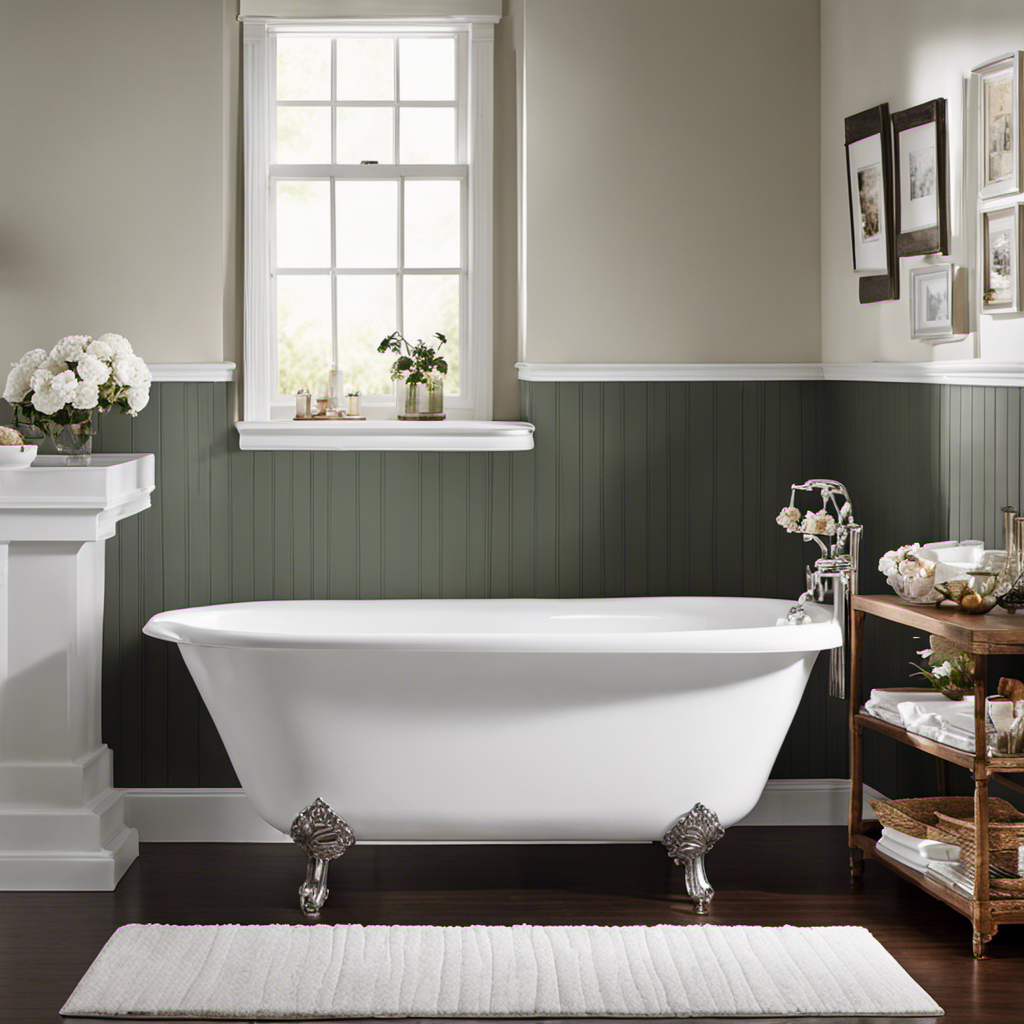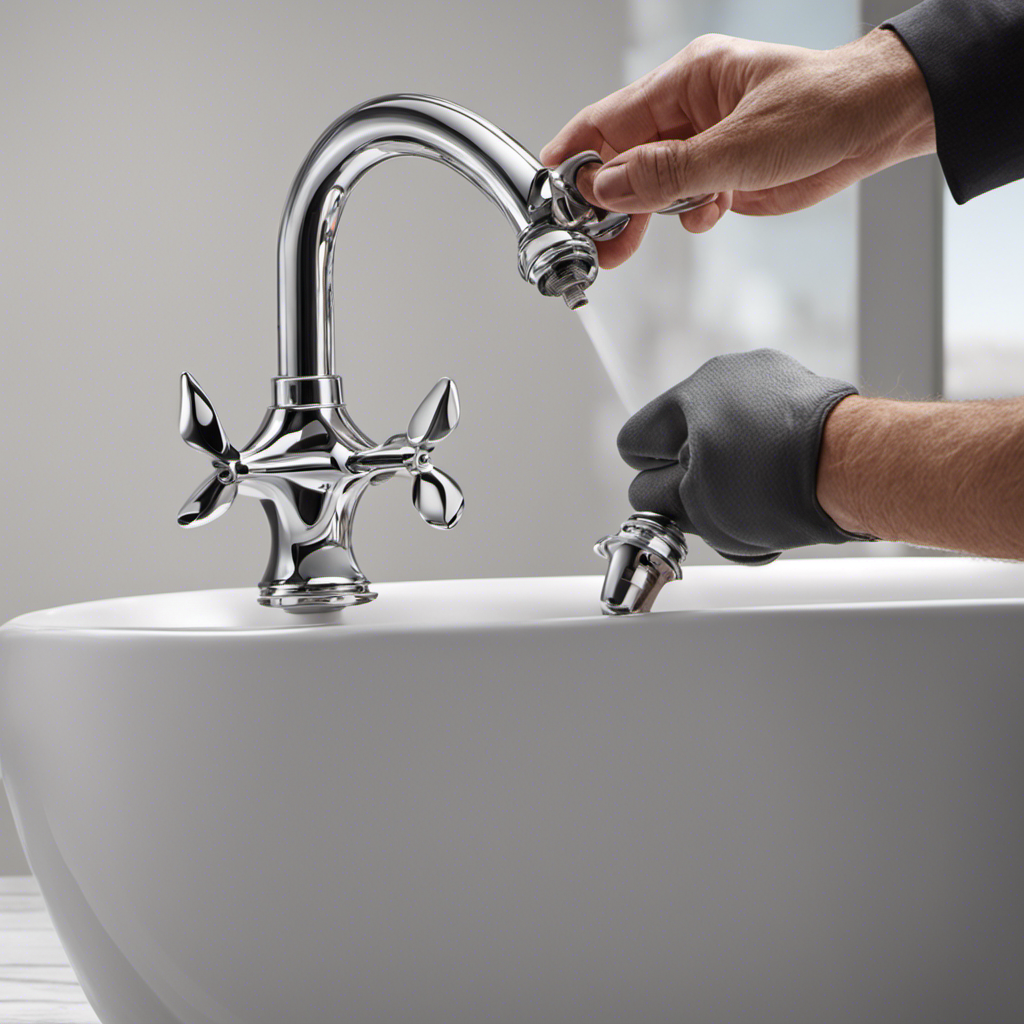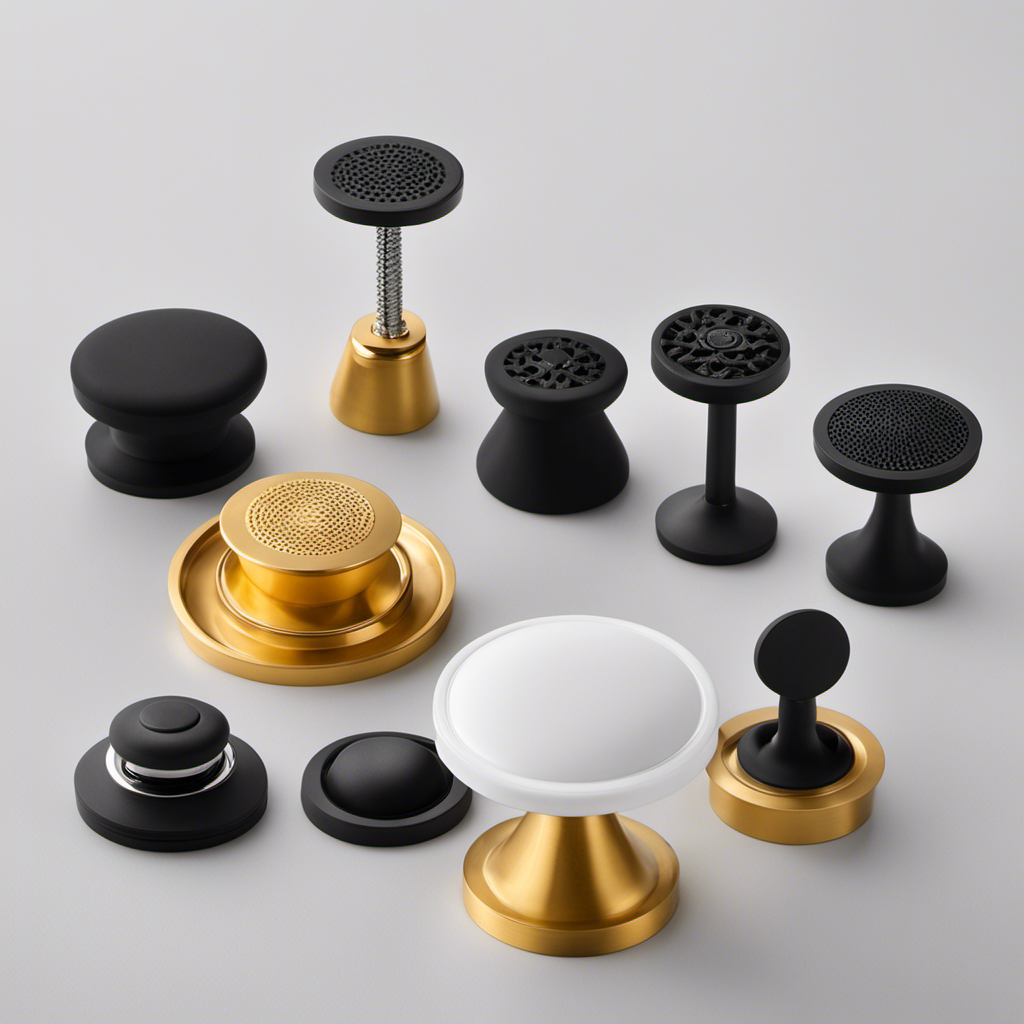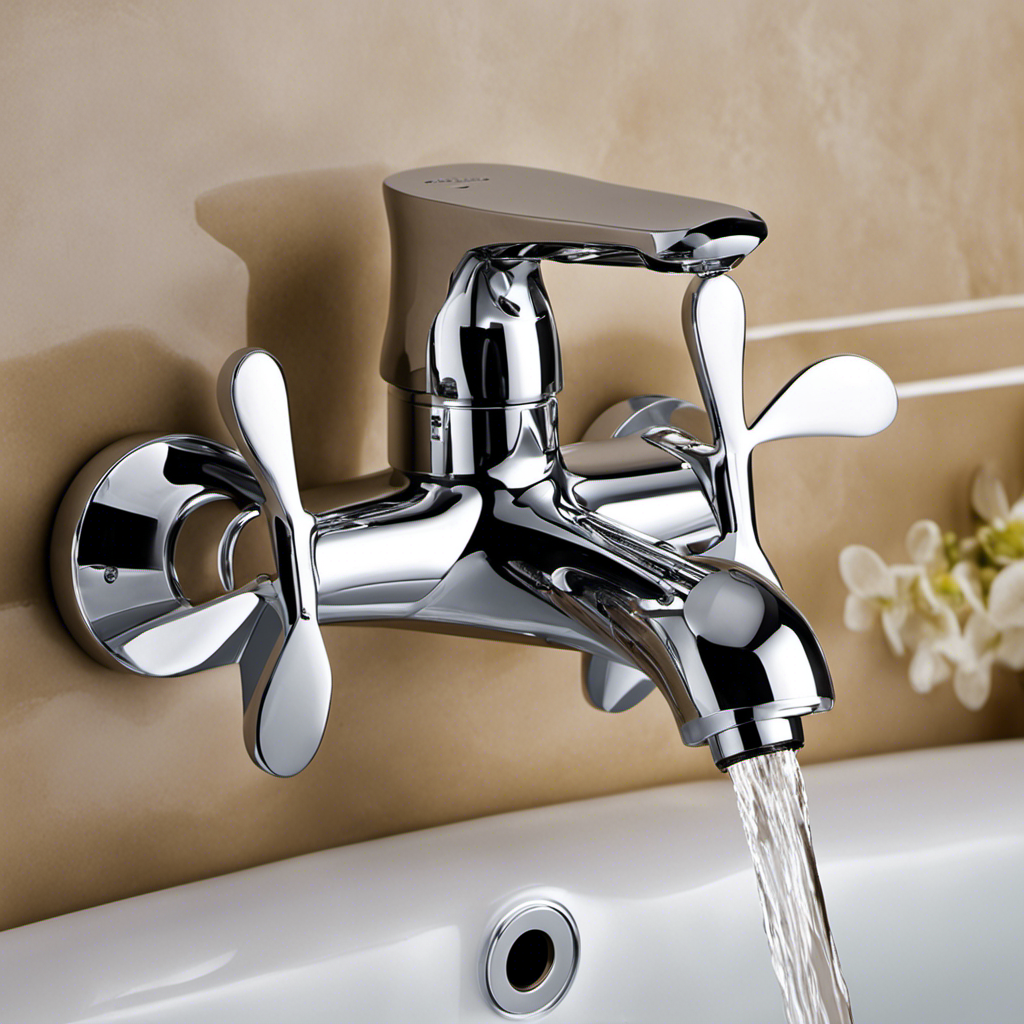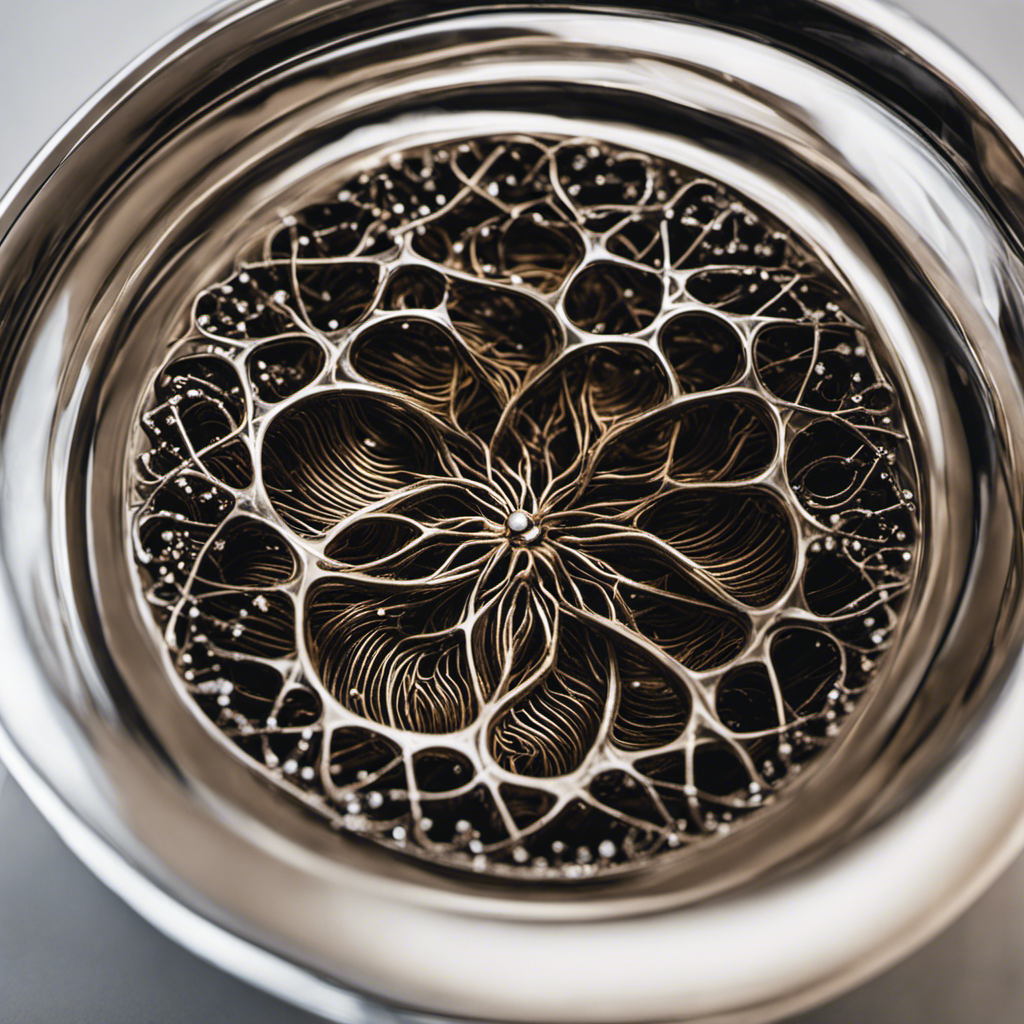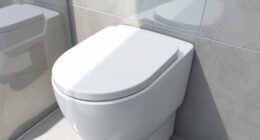Are you tired of looking at your old, worn-out bathtub? It’s time to give it a fresh new look!
In this article, we will show you how to repaint your bathtub using simple steps that anyone can follow. From preparing the surface to applying the final coats, we will guide you through the entire process.
With a little time and effort, you can transform your bathtub into a stunning centerpiece in your bathroom. So grab your paintbrush and let’s get started!
Key Takeaways
- Thoroughly clean the bathtub surface and remove any existing caulk or silicone before starting the repainting process.
- Use a paint scraper, chemical paint remover, or abrasive sponge/scrub brush to remove old paint and stains from the bathtub surface.
- Repair any chips and cracks in the bathtub using a bathtub repair kit and enamel repair compound.
- Properly sand the bathtub surface with fine-grit sandpaper before applying primer and paint to ensure adhesion and a smooth finish.
Preparing the Bathtub Surface
Before you can start painting the bathtub, you’ll need to thoroughly clean and sand the surface. Bathtub surface preparation is crucial to ensure a smooth and long-lasting finish.
To begin, gather the necessary supplies such as a mild detergent, sponge, sandpaper (grit 220-400), and a clean cloth. Start by removing any existing caulk or silicone using a caulk remover tool.
Next, clean the surface with a mild detergent, scrubbing gently to remove dirt, soap scum, and oils. Rinse thoroughly and allow the surface to dry completely. Once dry, use sandpaper to lightly sand the entire surface to create a rough texture for better adhesion. Wipe away dust with a clean cloth.
Now, your bathtub surface is ready for the next step in the repainting process.
Cleaning and Removing Old Paint
To start cleaning and removing old paint, you’ll need to gather a few supplies. Here are three items that will help you tackle this task effectively:
-
Paint scraper: This handy tool will allow you to gently scrape away the old paint from the surface of your bathtub. It’s important to use a scraper with a sharp edge to ensure efficient removal without causing any damage.
-
Chemical paint remover: Sometimes, stubborn paint may require the use of a chemical paint remover. These products are designed to break down the paint and make it easier to remove. Be sure to follow the instructions carefully and use protective gear when working with these chemicals.
-
Abrasive sponge or scrub brush: For those hard-to-remove stains, an abrasive sponge or scrub brush can be incredibly helpful. These tools provide extra scrubbing power to tackle any remaining paint or stains on the surface of your bathtub.
Repairing Chips and Cracks
When it comes to repairing chips and cracks in your bathtub, there are a few key points to keep in mind.
First, you’ll want to focus on filling in the cracks to prevent any further damage. This can typically be done using a bathtub repair kit that includes epoxy filler and a putty knife.
Next, if you have any chipped enamel, patching it up is essential to restore the appearance of your bathtub. This can be done by sanding down the chipped area, applying enamel repair compound, and then smoothing it out with a sanding block.
Filling in Cracks
You’ll need to start by applying a waterproof filler to the cracks in the bathtub. This step is crucial in repairing cracks and filling gaps to ensure a smooth and long-lasting finish. Here’s what you need to do:
-
Clean the cracks: Use a mild detergent and a scrub brush to clean the cracks thoroughly. Make sure to remove any dirt, grime, or loose particles from the surface.
-
Apply the filler: Use a putty knife to apply the waterproof filler into the cracks. Fill the cracks completely, making sure to level the filler with the surrounding bathtub surface.
-
Smooth and blend: Once the filler is applied, use a wet sponge or a damp cloth to smooth and blend the filled areas. This will help achieve a seamless finish.
Patching Chipped Enamel
Using a small brush, apply the enamel patch to the chipped areas on your bathtub. Repairing enamel chips is an essential step in maintaining the overall appearance and functionality of your bathtub.
Enamel, a durable and glossy coating, can become chipped over time due to regular use or accidental damage. To address these chips, start by cleaning the chipped areas with a mild cleaner and then drying them thoroughly.
Next, using a small brush, carefully apply the enamel patch to the affected areas, ensuring a smooth and even coverage. Allow the patch to dry completely before using the bathtub again.
Sanding the Bathtub
To prepare the bathtub for painting, start by lightly sanding the surface to remove any old paint or imperfections. This step is crucial to ensure that the new paint adheres properly and creates a smooth, professional finish.
Here are three sanding techniques and tools you can use to achieve the best results:
-
Begin by using a fine-grit sandpaper (around 220 grit) to gently sand the entire surface of the bathtub. This will help remove any loose or peeling paint and create a rough surface for the new paint to bond with.
-
For hard-to-reach areas, such as corners or edges, use a sanding sponge or sanding block. These tools provide better control and allow you to sand more effectively in tight spaces.
-
After sanding, make sure to thoroughly clean the bathtub to remove any dust or debris. Use a damp cloth or sponge to wipe down the surface, and then allow it to dry completely before moving on to the next step.
Applying Primer
When it comes to repainting a surface, applying primer is a crucial step that should not be overlooked. Priming serves several important purposes, including improving adhesion, enhancing durability, and providing a smooth base for the paint to adhere to.
Therefore, it is essential to choose the right primer for the specific surface you are working on, considering factors such as the material, texture, and intended use of the painted surface.
Additionally, to achieve a professional-looking finish, it is important to apply the primer evenly, using smooth and consistent strokes, ensuring complete coverage and avoiding any drips or uneven areas.
Importance of Priming
First, make sure you understand the importance of priming when repainting a bathtub. Proper surface preparation is crucial to ensure a long-lasting and high-quality finish. Here are three reasons why using a high-quality primer is essential:
-
Enhanced Adhesion: A good primer creates a strong bond between the surface and the topcoat, preventing peeling and flaking over time. It helps to seal any imperfections, ensuring a smooth and even finish.
-
Improved Durability: By providing an extra layer of protection, the primer helps to resist stains, moisture, and daily wear and tear. This extends the lifespan of your bathtub’s new paint job, saving you time and money in the long run.
-
Better Color Coverage: Using a primer that is specifically designed for your chosen topcoat color can enhance the richness and depth of the final result. It allows the color to fully develop and ensures that it stays true and vibrant.
With the importance of priming in mind, let’s now move on to choosing the right primer for your bathtub.
Choosing the Right Primer
Make sure you carefully consider which primer is best suited for your specific needs and desired outcome. Choosing the right primer is crucial for a successful bathtub repainting project.
There are different types of primers available, such as acrylic, oil-based, and epoxy primers. Acrylic primers are water-based and easy to clean up, making them ideal for beginners. Oil-based primers offer excellent adhesion and durability, perfect for high-moisture areas like a bathroom. Epoxy primers are known for their exceptional resistance to water and chemicals, making them a great choice for a long-lasting finish.
Regardless of the type you choose, using a primer before painting your bathtub offers several benefits. It provides a smooth surface for the paint to adhere to, enhances the durability of the paint, and helps prevent chipping and peeling.
Once you’ve decided on the primer type, it’s time to move on to the next crucial step: applying primer evenly.
Applying Primer Evenly
Applying primer evenly is essential for achieving a smooth and professional finish on your bathroom project. To ensure that your primer is applied evenly, consider the following tips:
-
Prepare the surface: Before applying the primer, make sure the bathtub is clean and dry. Remove any dirt, grease, or old paint using a gentle cleanser and a scrub brush. Rinse thoroughly and allow the surface to dry completely.
-
Choose the right primer: Select a high-quality primer specifically designed for use on bathtubs. Look for a primer that is resistant to water, mold, and mildew. This will help to ensure that your paint adheres well and provides long-lasting protection.
-
Use a roller or brush: When applying the primer, use a high-quality roller or brush. Start from one corner and work your way across, applying even pressure. Make sure to overlap each stroke slightly to avoid streaks or uneven coverage.
Choosing the Right Paint
When choosing the right paint for repainting a bathtub, it’s important to consider the type of surface and the specific paint requirements. The best paint for a bathtub is epoxy paint, as it is durable, water-resistant, and can withstand the constant exposure to water and cleaning chemicals.
Before applying the paint, you need to properly prepare the surface by cleaning it thoroughly and removing any old paint or residue. Start by scrubbing the bathtub with a non-abrasive cleaner and rinse it well.
Next, sand the surface lightly to create a rough texture that will help the paint adhere better. Finally, wipe down the bathtub with a cloth soaked in denatured alcohol to remove any remaining debris.
Now that the surface is properly prepared, you are ready to apply the first coat of paint.
Applying the First Coat
When applying the first coat of paint to your bathtub, it is important to consider the drying time after application and the techniques for achieving a smooth finish.
After applying the paint, you will need to allow sufficient drying time before applying additional coats or using the bathtub. This will help ensure that the paint adheres properly and avoids any smudging or damage.
To achieve a smooth finish, it is recommended to use a brush or roller with long, even strokes, and to avoid overworking the paint.
Drying Time After Application
To ensure proper drying time after you’ve finished painting, it’s important to avoid using the bathtub for at least 24 hours. This allows the paint to dry and set properly, ensuring a long-lasting and professional-looking finish. During this time, it’s essential to avoid any contact with water or moisture, as it can interfere with the curing process.
Here are three reasons why giving the paint enough time to dry is crucial:
-
Prevents smudging: If you use the bathtub too soon, the paint may still be wet and can easily smudge or get damaged, ruining all your hard work.
-
Enhances durability: Allowing the paint to fully dry and cure increases its durability, making it more resistant to chipping, peeling, and other forms of damage.
-
Improves adhesion: Giving the paint enough time to dry allows it to bond properly with the surface, ensuring a strong and long-lasting finish.
Techniques for Smooth Finish
For a smooth finish, it’s important to apply multiple thin coats of paint rather than one thick coat. This technique ensures that the paint is evenly distributed and reduces the chances of streaks or drips.
Before starting, make sure to select the right color for your bathtub. Consider the style and overall aesthetics of your bathroom to choose a color that complements the space.
Once you have applied the first coat of paint and it has dried completely, you can use a buffing technique to smooth out any imperfections. This involves gently rubbing the painted surface with a fine-grit sandpaper or a buffing pad. The buffing process helps to level the paint and create a polished finish.
Now, you can transition into the next section and learn about applying additional coats for a durable and long-lasting bathtub repaint.
Applying Additional Coats
Once you’ve finished the first coat, you’ll need to apply a second coat of paint to ensure a smooth and even finish. Applying multiple coats is crucial for a durable and long-lasting bathtub paint job. Here are three reasons why this step is essential:
-
Improved Coverage: The second coat helps to fill in any missed spots or thin areas from the initial application. This ensures that the entire surface is evenly covered, leaving no bare patches.
-
Enhanced Durability: By applying a second coat, you’re adding an extra layer of protection to your bathtub. This helps to prevent chipping, peeling, and fading over time, ensuring that your paint job withstands daily wear and tear.
-
Uniform Appearance: The final coat evens out any inconsistencies in color or texture, providing a seamless and professional-looking finish. It eliminates any visible brush strokes or unevenness, giving your bathtub a flawless appearance.
Remember to allow sufficient drying time between coats as specified by the manufacturer. Once the final coat is dry, your repainted bathtub will be ready to use and enjoy.
Sealing and Finishing Touches
After applying the final coat of paint, you’ll want to seal and add the finishing touches to your newly painted tub.
Sealing the paint is an important step to ensure its longevity and durability. There are different sealing techniques you can use, depending on the type of paint you used.
If you used epoxy or acrylic paint, you can apply a clear topcoat specifically designed for these types of paints. This will protect the paint from water damage, scratches, and fading.
For enamel or oil-based paints, you can use a clear polyurethane sealant. This will provide a strong and long-lasting protective layer.
Once the paint is sealed, you can enhance the appearance of your tub by adding finishing products such as decorative tiles, decals, or non-slip coatings. These finishing touches will not only make your tub look more aesthetically pleasing but also provide additional functionality and safety.
Maintaining the Repainted Bathtub
To maintain the longevity and appearance of your newly painted tub, you should regularly clean and avoid using abrasive cleaners or scrub brushes. Here are three important tips for bathtub maintenance to prevent peeling paint:
-
Use gentle cleaners: When cleaning your repainted bathtub, opt for mild, non-abrasive cleaners specifically formulated for this purpose. Avoid harsh chemicals or abrasive cleaners that can strip away the paint and cause it to peel.
-
Avoid scrubbing vigorously: While it’s important to keep your bathtub clean, scrubbing with excessive force can damage the painted surface. Use a soft sponge or cloth to gently clean the tub, being careful not to scratch or scrape the paint.
-
Dry thoroughly after each use: To prevent water damage and peeling paint, make sure to dry the tub thoroughly after each use. Wipe away any excess moisture with a soft towel or cloth.
Frequently Asked Questions
Can I Repaint a Bathtub Without Preparing the Surface?
You can’t repaint a bathtub without preparing the surface first. Skipping this step can lead to poor adhesion, peeling, and a shorter lifespan for the new paint. It’s important to use a primer for better results.
How Often Should I Clean and Remove Old Paint From My Bathtub Before Repainting?
To properly prepare the surface of your bathtub for repainting, it is important to clean and remove old paint regularly. How often you should do this depends on the condition of the paint and the bathtub.
Are There Any Specific Instructions for Repairing Larger Chips and Cracks in a Bathtub?
To repair larger cracks and chips in a bathtub, follow these steps: Clean the damaged area, apply a bathtub repair kit, let it dry, sand it smooth, and then apply a layer of bathtub paint.
Is It Necessary to Sand the Entire Bathtub Surface Before Repainting, or Can I Just Sand the Damaged Areas?
To ensure a smooth and even finish, it is necessary to sand the entire bathtub surface before repainting. However, focus on patching the damaged areas first using the appropriate sanding technique.
What Are the Different Types of Sealers and Finishes Available for a Repainted Bathtub, and How Do I Choose the Right One?
To choose the right sealer and finish for a repainted bathtub, consider factors like durability, water resistance, and ease of application. Properly cleaning and removing old paint from the surface beforehand ensures a smooth and long-lasting result.
Conclusion
Congratulations! You’ve successfully transformed your bathtub from drab to fab! With a little elbow grease and the right tools, you’ve turned a dull and worn-out tub into a stunning centerpiece.
Now, you can enjoy luxurious baths and showers like never before. Your repainted bathtub will surely be the envy of your friends and family.
So go ahead, indulge in some well-deserved relaxation and bask in the glory of your DIY masterpiece.
Keep up the good work and continue to maintain your newly repainted bathtub for years to come!
